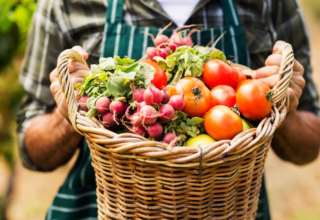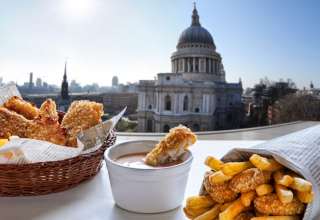Asador Etxebarri is one of the world’s most talked-about restaurants. Adam Lechmere tried the 15-course tasting menu
There’s nothing like the anticipation of a meal in a fêted restaurant. Especially one that – by word of mouth and in the hard currency of the highest awards the gastronomic world can bestow – is reckoned to be one of the best in the world.
In the case of Asador Etxebarri in the tiny Basque village of Atxondo, the journey itself adds to the feeling of a pilgrimage. The higher into the hills we go, the smaller the villages, the darker the woods, and the more forbidding the limestone escarpments looming above us. This part of Spain – the Pais Vasco, the Basque Country – is thinly populated; people are glimpsed behind half-closed doors, or staring from a field. Old men sit out in the sun and turn their heads slowly as we pass. A cow regards us placidly from a steep meadow.
I’m with Agustin Santolaya, the winemaker of Roda, the fine Rioja bodega whose 30th anniversary we’ve come to celebrate at Etxebarri (they’re entertaining 18 journalists in a block-booking unheard of in the restaurant, which – except on Saturdays – is open only for lunch).
Read review of Roda’s 30th anniversary tasting here
Master of the grill
Santolaya tells me about Victor Arguinzoniz, the legendary chef who was born and brought up in Atxondo, and has worked in no other kitchen but this, which he opened in 1990 and ran in relative obscurity until he was “discovered” by Anthony Bourdain and finally came to the notice of Michelin in 2010. He’s as shy as a chamois, and never shows himself in the restaurant.
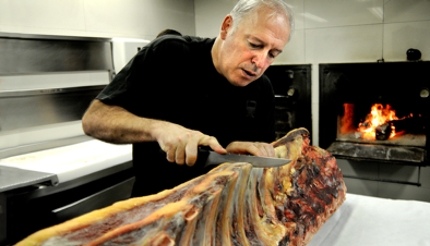
Arguinzoniz is a master of the grill. Everything is cooked over wood. I didn’t see the kitchen, so missed the famous adjustable grills and pans custom-designed for cooking sauces and infusions so as to imbue them with Etxebarri’s signature smokiness.
Smoke and wood, spits and blackened pans: I’m put in mind of the mad cook Swelter in the terrible kitchens of Gormenghast. But Asador Etxebarri has an air of stripped-down cleanliness and calm. It’s a fine old stone building with curls of smoke coming from the chimneys. The large downstairs room is bare and open, and functions as the village bar. A couple of men sit reading the papers and watching the bullfight.
On the first floor, the airy, high-beamed rooms give onto a pleasant balcony. One wall is a glass-fronted wine safe. The wine list is imaginative and full of Spanish and international gems – the wonderful Can Rafols from Penedes caught my eye, then Chateau Beaucastel, Craggy Range, Zind-Humbrecht, Araujo, Spioenkop. It’s a bit chaotic, arranged by style (“silky” reds and so forth); this was seen as quite the thing about 15 years ago. The sommelier is from El Bulli, and he keeps the prices reasonable.
A tomato epiphany
And so to the food. We had the 15-course tasting menu. The food is simple and runs the gamut from sublime to commonplace. At its best it’s astonishing – anchovies redolent of the sea; goat’s milk butter with mozzarella (from Arguinzonaz’s own buffaloes) with a delicate goaty smokiness, tuna with a heavenly smoky leaven, its tomato accompaniment drawing murmurs of appreciation. A tomato epiphany – so this is what they taste like?
Next came moules mariniere in a fiddly little tin, which gave the impression, compounded by the rather ordinary sauce, that they weren’t fresh. But then the queen scallops arrived, mini-bombs of flavour and complexity, the texture set off by an agreeable soft crunch of grit, anchoring you as it were on the very harbour front.
Pause for breath and Palamos prawns as long as your hand appear. Succulent, juicy density. But as to flavour: where does delicacy tip over into blandness? The essence of flavour is contrast, and these were all yin and no yang. Great cooking transports you (close your eyes and you’re in a sun-drenched tomato field); these prawns remained just that – prawns.
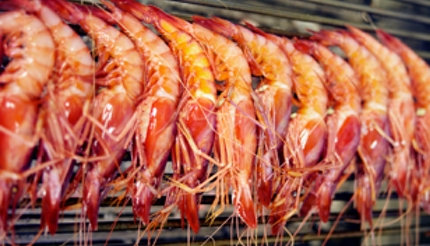
Oddities and joys
But there were delights aplenty. The squid, with its dash of ink and caramelised onions was perfect in texture (melting, with grip) while the flavour danced a mazurka between the salt-sweet squidness, the bitterness of the ink and the savoury-sweet onions. More texture: almost-raw ceps whose intensity crept up on you and lingered for long minutes. Game, ceps and match to the chef.
Oddities and joys. The scrambled egg yolk and chanterelle: egg emulsion that coated the tongue alarmingly and overwhelmed the delicate fruit; vanilla ice-cream and beetroot juice in perfect harmony, the juice earth-sweet.
Another joy was the wine. This was a lunch in celebration of Roda. The wines bore out my theory that if a wine is good enough it will go with almost anything. But occasionally there is a match that sets your palate tingling. Time and again, the sweet black fruit and complex, textured palate of the wine enhanced and underpinned the smoky flavours.
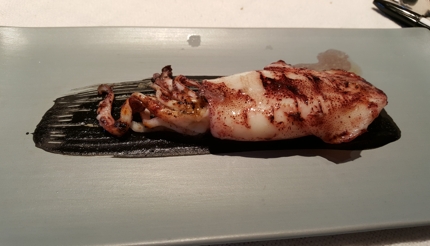
Quietly smoking up in the hills
Asador Etxebarri shot to fame at a time when the great molecular gastronomists – Adria, Blumenthal and the Roca brothers – were bringing theatre into the restaurant. While they were busy spherificating olives and zapping eggs with dry ice, Arguinzoniz was quietly smoking up in the hills. It must have seemed a nice contrast to El Bulli’s Grand Guignol. They were all science, he was elemental: we love cooking over wood because it connects us with our primal selves.
There’s a nice old-fashioned vibe to Etxebarri now. At times it felt like a gastropub, with dishes served on slabs of charcoal-blackened driftwood, mussels in tins and so forth. I half expected a wire basket of chips. The service was impeccable, invisible, and the meal was punctuated by owner Mario Rotllant’s low-key commentary on the wines and their genesis, and winemaker Agustin Santolaya’s various additions (Rotllant: “Agustin doesn’t speak any English, but that doesn’t matter when you have the best general manager in Spain”).
It was memorable, of course – how could it not be? – but I wonder if it should be up there in the rarefied atmosphere of the “world’s best”. I’m often surprised by delectable dishes (I had a scotch egg in the Wigmore [link https://worldoffoodanddrink.worldtravelguide.net/columnists/zeren-wilson/london-insider-2/] the other day, the memory of which I’ll take to my grave) but surely to reach the true heights of global, pilgrimage-worthy excellence, there has to be an indefinability, a magic – how does he do that? Etxebarri is very, very good, but it doesn’t leave you shaking your head in disbelief. Perhaps, in the end, Aguinzoniz is just too modest.


